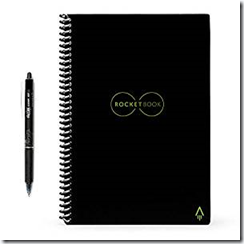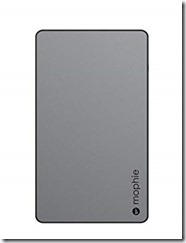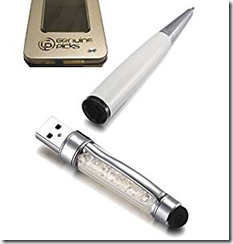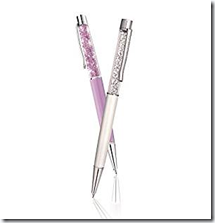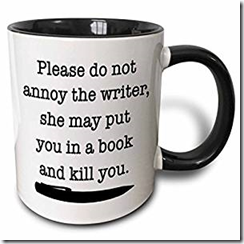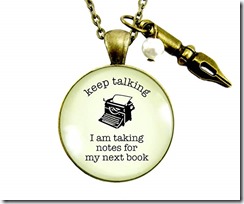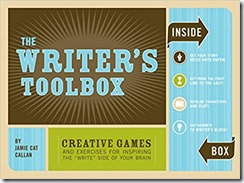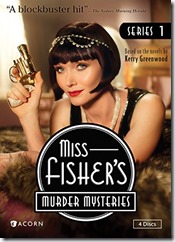Tag: #amwriting
Tripping Over Timelines
How do you keep track of timelines in your work-in-progress? Do you use graphs, charts, or plotting boards to note the days of the week? When I was starting out as a writer, I kept plotting boards. This was a poster board that I divided into blocks representing each chapter. After I wrote a section, I’d fill it in on the poster for a quick visual reference. These days, I use a chapter by chapter outline in a Word file. I’ll still fill it in after I write each segment. I add the days of the week so I can remember what day it is for each scene.
Spoiler Alert! As I was working on EASTER HAIR HUNT, #16 in my Bad Hair Day mysteries, I hit a major snag. The story begins on the day before Easter. It’s March. My hairdresser sleuth, Marla Vail, is seven months pregnant. Her mother wants to plan a baby shower. Meanwhile, Marla is chasing down her missing friend, Blinky, who disappeared after an Easter Egg Hunt at Tremayne Manor.
How much time has passed since Blinky had gone missing? Was it reasonable to think she might still be alive? Uh-oh, I’d better check on the timeline. This realization led me to a plot twist two-thirds through the story.
I’d been concentrating so hard on the storyline, that I had lost sight of the subplots. If Marla is seven months pregnant, when is her due date? I had to go back to the previous book, Trimmed to Death, to figure out when she might have conceived. Then I printed out a set of calendars from https://www.timeanddate.com/calendar/
According to what I read online, Easter Sunday can fall between March 22 and April 25. In 2008, Easter was March 23 and Passover was April 20. Okay, my story will start on Saturday, March 22. By counting the weeks, I figured out Marla’s due date will be June 15.
By now, my story had progressed into April. Her mother could hold the baby shower on April 19, the day before Passover. I penciled in other events involving Marla’s friends and relatives. Now I know exactly what is happening, and when. Had I done this from the start, I wouldn’t have had to go back and change each conversation that mentioned these personal issues. I’d like this story to finish before Marla’s baby shower, so that could be my final wrap scene.
Sometimes you get carried away in the rush of storytelling and have to go back to fill in the details. What’s my advice? Get a calendar and follow your story along so you know which week you’re on and how long the action is taking. Sometimes you’ll read an entire murder mystery that takes place over a weekend. In that case, you’d need to keep an hourly account. Either way, keep track of your timeline from the start and save yourself some time-consuming revisions.
How do you keep track of timelines in your novel? #amwriting #writetip Share on XGIVEAWAY
Enter June 1-18 to win a free mystery from the prize vault at Booklovers Bench
Self-Publishing Made Simple – Part 5
Book Production for the Indie Author
This is Part 5 of my Self-Publishing Made Simple blog series.
You have a polished manuscript. You have bought a block of ISBN numbers. You’ve determined how you want to present yourself as a publisher re using an imprint or not.
Now you’ll need to decide if you will be publishing an ebook, paperback, and/or hardcover edition. Finish the copyright page by adding ISBNs for the format of your choice.
Note: If you’re simply going to upload your book to Amazon and participate in their KU program, likely you can use the ISBN number assigned by Amazon. This is true for certain other distributors as well. But keep in mind that this will register them as the publisher on record rather than you. See Part 4 for how to assign book titles to an ISBN number.
Book Descriptions and Tag Line
Write a one-sentence tag line for your book along with short and long story descriptions. If you need help, go here:
Blurb Writer: http://www.blurbwriter.com/
Blurb Bitch: http://www.blurbbitch.com
Karen’s Blurb Service: http://www.angelfire.com/stars4/kswiesner/BlurbService.html
Killion Group: http://thekilliongroupinc.com/
For a paperback, decide if you want a longer blurb on the back cover or a shorter one with review quotes. Remember to leave room for the bar code. You do not need to buy this. Distributors will provide their own bar codes, or you can get one free online. Prepare the back cover copy to send to your cover designer.
Author Biography
Prepare your author biography. This should be written in third person in an engaging manner. List your writing awards, professional organizations, genres, and special interests. Have a long bio, a short bio, and a couple of speaker introductions geared to writers and readers. You’ll need a shorter bio for the online book distributors, where you might want to include the URL to your website or newsletter.
Keywords
Make a list of your keywords. These are phrases readers might use to search for your book. They don’t have to be one word. You can use phrases such as, “mysteries with humor” or “cozy mysteries with pets” or “mysteries set in small towns.” Here’s an example of more keywords for mysteries. Look at the bestseller categories on Amazon for more ideas. https://kdp.amazon.com/en_US/help/topic/G201276790
Cover Design
Think about a scene or two that you’d like to see depicted on your cover. Also consider your series branding if your book isn’t a standalone. Colors, text, and placement should be consistent from book to book. So should the art style. Look for a cover artist who has a portfolio of books in your genre. Join the writing community to get recommendations.
Pricing
If you’re unsure what to charge, look at other books in your genre with similar page counts to see what the going rates are. What are readers in your genre willing to pay for a print book or a digital copy?
Formatting
Formatting comes next. You can do it yourself, hire a professional, or use one of the third party aggregates, such as Draft2Digital, to do the conversions for you. What you’ll need will depend on your technical skills and where you plan to upload your book.
Distribution
Before we get into particulars on book distributors, decide where you want your book to be sold. Are you planning to sell it at Amazon alone, perhaps with their Kindle Select program so people can get your book through Kindle Unlimited? Then all you need is a mobi file. For BN, Kobo, and Apple, you’ll need an ePub file. For print, a pdf file is required.
Ebook Distributors
Amazon: https://kdp.amazon.com
Barnes & Noble Press: https://press.barnesandnoble.com/
Kobo: https://www.kobo.com/us/en/p/writinglife
Apple Books: https://itunesconnect.apple.com
Google Play: Access through one of the Aggregators below
Third Party Aggregators
Draft2Digital, https://draft2digital.com
Smashwords: www.Smashwords.com
PublishDrive: https://publishdrive.com/
Print Options
Amazon KDP Print: https://kdp.amazon.com
IngramSpark: http://www.ingramspark.com/
Barnes & Noble Press: https://press.barnesandnoble.com/
Once you have all these pieces ready to go, you can start uploading to the various book distributors.
Self-Publishing Made Simple, Part 5 - Book Production for the Indie Author #indiepublishing #amwriting Share on XComing Next: Ebook Distributors
Did you miss our earlier posts on Self-Publishing Made Simple Blog Series?
Go here to catch up:
Part 4 – Buying and Assigning ISBNs https://wp.me/paLXP7-4pO
Part 3 – Adding Front & Back Material https://wp.me/paLXP7-4pz
Part 2 – Manuscript Preparation for the Indie Author https://wp.me/paLXP7-4oX
Part 1 – Getting Started as an Indie Publisher https://wp.me/paLXP7-4oQ
CONTESTS
April 15-21 RONE Awards
Please VOTE for Body Wave Audiobook in the RONE Awards THIS WEEK ONLY! Sign in or Register at InD’Tale Magazine, https://www.indtale.com Be sure to click the email confirmation link if you are registering for the first time. Once logged in, go to RONES in upper right corner, hover over 2019 RONE Awards, and click on 2019 RONE Awards Week One that pops up. Scroll down to the Audiobook: Paranormal/Mystery Category and vote for my title, BODY WAVE.
April 1 – 18 Booklovers Bench
Enter to win a free book from the Prize Vault at Booklovers Bench, including a copy of SHEAR MURDER, #10 in the Bad Hair Day Mysteries. https://bookloversbench.com/win-a-free-book-april-2019/ #giveaway #cozymystery
Self-Publishing Made Simple – Part 4
Buying and Assigning ISBNs for your Indie Published Books
This is Part 4 in my Self-Publishing Made Simple blog series.
Legalities
You’ve prepared your manuscript as per Part 2 and Part 3 below. Now decide if you’ll want to publish your work under your own imprint. If so, create a publisher name and do an online search to see if the domain is taken. If it is available, reserve the domain name.
Register with your State as a “Fictitious Name” or a “Doing Business As” company. You can do this online. Or establish an LLC. Check with your accountant to see which one is right for you. It looks more professional for your book to be published by “XYZ” Press than by the author.
Apply for a county or city business license/tax receipt as required. Note: if you’re 65, you may be exempt from fees but you still have to apply. Check your local regulations.
Open a business bank account. Consider if you’ll be selling your own books and will need to collect sales tax. Otherwise as sole proprietor, you don’t need an EIN number. Use your own SS number as an individual proprietor. Again, check with your accountant or attorney for what’s best for you.
Buying ISBNs
ISBN stands for International Standard Book Number. Why own your ISBNs?
- Control over metadata
- More professional – Your imprint is the publisher
- More availability to retailers, booksellers, and librarians
- You need an ISBN to get a barcode, which may or may not include pricing information.
- You need one ISBN number per format. So for an ebook and a paperback edition, you’d need two ISBNs. For a hardcover, you’d need another one. You do not need an ISBN to publish an audiobook through ACX. You may need one for audiobook distribution elsewhere.
- Certain book distributors will require you to have your own ISBN.
- Resource: http://www.ingramspark.com/blog/owning-your-own-isbn-in-self-publishing
Where can you buy them?
Sign in to http://www.Bowker.com It costs $295 for 10 ISBN numbers. You DO NOT need to buy a barcode or a QR code. You can get these free online by searching for free barcode generators or free QR codes. Otherwise, distributors such as Ingram and KDP Amazon supply their own barcodes. Sign up for emails from Bowker.com so you can be notified of sales.
How to Assign Title Data to Your ISBN(s):
- Sign into https://www.myidentifiers.com/ with your username and password
- Go to the My Account dropdown menu on the right side of the navigation bar at the top of the page.
- Click Manage ISBNs.
- Click Assign Title next to the ISBN number you wish to assign.
- Complete all fields marked with red asterisks. Be sure you have ready your book’s description, format, price, and author biography.
Title Details
Book title, subtitle, main description, original publication date, language, copyright year, optional Library of Congress Control Number, cover image.
Contributors
Your author name goes here along with your bio.
Format and Size
Medium, i.e. Ebook, Digital, Print, or Audio
Format, i.e. Electronic Book Text
Primary Subject, i.e. Fiction, Mystery and Detective, General
Secondary Subject, i.e. Fiction General
Editions and Volumes; Title Volume Number – number of book in a series; Total Volume Number – number of products in a multi-volume work (i.e. box set)
Previous Edition ISBN or New Edition ISBN
Sales and Pricing
Where is the title sold? United States
Publisher and Imprint. Here is where you put your LLC or fictitious publisher name.
Title Status: Active Record
Publication Date: Fill this in; you can change it later if necessary
Target Audience, i.e. Trade
Price: Currency (US Dollars), Price (3.99) Type (Retail Price)
Series Title Info (name of series) and Series Volume Number
Hit the SUBMIT button.
You can change or add any of this material, except the ISBN number assignments, at a later date.
If you have another format for the same title, you can click “Clone” next to the first one, select the next ISBN number, and change the data accordingly for the new title.
If this site isn’t working work well for you, switch to a different browser.
Keep your ISBNs handy. You’ll need to add them to your copyright page before formatting and to fill them in when you upload your book to the various distributors.
Do you have any tips on this topic to add?
Buying & Assigning ISBNs for your Indie Published Books #indiepublishing #amwriting Share on XComing Next: Preparing for Book Production
Enter our Monthly Giveaway at Booklovers Bench for a chance to win a free book from our Prize Vault.
Self-Publishing Made Simple – Part 2
Self-Publishing Made Simple – Manuscript Preparation
Reissuing Your Backlist Titles
1. For older works where you don’t have a cohesive master file, you may need to use a scanning company such as Blue Leaf (http://www.blueleaf-book-scanning.com/). You’ll need a print copy to send in, and it won’t be returned. Send the version that’s the most up to date, i.e. later paperback instead of original hardcover.
2. After receiving your digital copy, review the story to correct formatting errors. Turn on the paragraph symbol in Word and look for weird symbols in between letters, missing or wrong punctuation, misinterpreted words, and misspellings. Search for ^- or an optional hyphen. Look for “die” instead of “the” or the number 1 instead of “I.” Italics might be missing or bolded instead. Look for “rn” coming out as “m”, such as “comer” instead of “corner.” In other cases “tly” might come as “dy”, as in “slighdy instead of “slightly.” Quote marks might be reversed, or there could be section breaks instead of page breaks.
3. If your publisher has provided you with a final pdf file, or you’ve downloaded an ebook file, you can use Calibre Ebook Management (https://calibre-ebook.com/) or Zamzar (https://www.zamzar.com/) to convert it into Word. However, the formatting may be messed up. In this case, copy the entire document onto a blank sheet and save it as a text file. Click on Remove Formatting (see symbol on Home page). Then reformat and save it as a Word file. You will lose italics but any weird justifications will be gone. You’ll have to read through the story very carefully adding in italics and looking for spacing errors or other problems as above.
4. Decide if you mean to revise the work and update the technology in the story.
Original Works
For a full-length original novel, hire a developmental editor and a copy editor/proofreader. Join author groups online and ask for names of editors who have experience in your fiction genre. You don’t want the local newspaper editor who’s your friend. Fiction is about structure and pacing along with grammar. You need an editor familiar with genre conventions. Experience at a publishing house is a plus.
Use a program such as Smart Edit (https://www.smart-edit.com/) to look for redundancies and repetitions. Revise your work as many times as necessary to give it professional polish. Ask beta readers to critique your story. Make it the best it can be and don’t be impatient, or your lack of care will show in customer reviews.
General Formatting Notes
I hire a professional formatter, so this section isn’t in my realm of expertise. However, I can share that we use Times New Roman 12 pt. font, 1 inch margins, indent first line 0.33 inches, Widow/Orphan off, single spacing. I put a page break at the end of each chapter. My chapter headings use Heading 1 so they get marked for the table of contents. The line of each chapter is flush left as per my preference. There are lots more choices here, but I’m not going into further details because your formatting source might advise something different. Or you can upload your Word file to one of the aggregators and they’ll do the conversions for you. More on this in a subsequent post.
The main point of this section is to be sure you have a polished, edited work that you’ll be proud to share. You can hire a formatter or learn how to do it yourself, but that’s later down the road after your manuscript is ready.
Self-Publishing Made Simple - Part 2: Preparing Your Manuscript #indiepublishing #amwriting Share on XComing Next: Adding Front and Back Material
Are you interested in reissuing backlist titles or publishing new, original works?
Editing Conundrums
Editing your novel always brings surprises. Here’s the latest one that I found upon doing a final read-through for Perish by Pedicure, one of my backlist titles that I’ve revised for an updated Author’s Edition.
HANGAR OR HANGER? This one tripped me up, so I looked for a definition. Guess what? My word choice was wrong. A hangar is a shed or shelter especially for housing aircraft. A hanger is a shoulder-shaped frame with a hook at the top for hanging a garment when not in use.
Here’s the original excerpt from Perish by Pedicure (previously edited by Kensington). Oops, I’ve also started three sentences in this paragraph with “ing” phrases. I’ll change the second one for better grammar.
Old Version:
Imagining how she’d exact restitution, Marla showered, blew out her hair, did her makeup, then pulled on a pair of black slacks and a ruby knit top. Not knowing what to expect at the convention center, she snatched a black Ann Taylor jacket from its hangar in case she would need it later. One more thing. Picking up the telephone receiver, she dialed her salon and left a message that she’d be there that afternoon with the Luxor crew. Thank goodness Georgia had stayed overnight at the hotel, she thought, finishing with a spritz of perfume. Dealing with two houseguests already had her frazzled.
New Version:
Imagining how she’d exact restitution, Marla showered, blew out her hair, did her makeup, then pulled on a pair of black slacks and a ruby knit top. Not knowing what to expect at the convention center, she snatched a black Ann Taylor jacket from its hanger in case she would need it later. One more thing. She picked up the phone receiver, dialed her salon, and left a message that she’d be there that afternoon with the Luxor crew. Thank goodness Georgia had stayed overnight at the hotel, she thought, finishing with a spritz of perfume. Dealing with two houseguests already had her frazzled.
Watch for over usage of the word, “Just” like in this passage where I use it three times.
“And why was that?” Marla asked, noting Ron rushing around the corner. Spotting her, the master stylist halted, looking shocked, but then he just as quickly recovered himself. He must have gotten a look at Sampson’s disheveled appearance. Marla missed Miguel’s response, because just then the hostess called their group. “Wait, Georgia isn’t here yet.”
“She’ll find us inside,” Liesl said, looking very hip in an off-the-shoulder ribbed lavender top. “Let’s go, luv.”
Twenty minutes later, Marla got worried when Georgia hadn’t shown up. Her friend knew they were meeting everyone at eight o’clock. Had she gone to their room to change? Taking her cell phone from her purse, she punched in Georgia’s personal number. No answer.
After excusing herself, she found a hotel phone and dialed their room. The ringing tone persisted until Marla gave up. Now what? Could Georgia have met some guy at the marina and decided to chuck her plans? Possibly, but she would’ve told me, knowing that I’d worry. She’d wait a while longer just in case her fears were groundless.
Replacements:
Marla missed Miguel’s response, because the hostess chose that moment to call their group.
She’d wait a while longer in case her fears were groundless.
These are the latest! Something always pops up when you are editing your work. But it’s important to catch these problems to make your work as polished as possible. Don’t stint on proofreading for one final time. Chances are you’ll always catch something. Happy Writing!
What are mistakes writers make that bother you the most?
Inconsistencies in Word Use
It’s important when editing your work to detect inconsistencies in word use. As I am revising my backlist titles, I am coming across several of these instances. One way that you can help avoid them in the future is to create a style sheet. Sometimes your publisher does this for you. Or you can note down observations yourself to make sure you follow through during the editing phase.
Here are some examples of items to note:
Two words or single word – town house or townhouse; coffeemaker or coffee maker, nightstand or night stand?
If you have different publishers, each one will have their own preferences. But if the editing is up to you, choose one way to list your word(s) and stick to it. Don’t know which one is correct? Look it up in your favorite grammar text. And if both are commonly used, choose the one that suits you and use that one on a consistent basis.
Wine types – Chardonnay or chardonnay? I’ve seen this done both ways. Whichever you do, be consistent for all wine varietals.
Character names – Chris or Christine? Jan or Janice?
In my recent book that I’m editing, I noticed that sometimes I referred to a character by her full first name and at other times by her nickname. This can be confusing for the reader. We’re reading about Jan through several chapters, and then there’s a Janice who shows up. Who’s that? Best to stick with one rendition, unless you happen to be giving the person’s full first and last name together, like in an introduction.
Terms of endearment – hon, sweetheart, or babe, as used by a particular character
If your guy is always calling the ladies “babe” then don’t have him switch suddenly to another word. It’s part of his characterization to use that one term.
Foreign words – chutzpah or chutzpah?
Decide if you are going to italicize the foreign word or not, and then be consistent throughout the story.
Hyphenated words – hard-boiled eggs or hard boiled eggs; fund-raiser or fundraiser?
Again, this can be a publisher choice. If not, look it up to see what’s correct or make your own decision about the hyphen.
Whatever your word choices, be consistent as you edit your work. Keeping a style sheet will help you remember which word to use.
Series Timelines
As your series grows in the number of books, it becomes critically important to keep track of your timelines. This came home to me recently when writing my latest work, tentatively titled Easter Hair Hunt. Hairstylist Marla Vail’s stepdaughter Brianna will be leaving for college soon. I wrote that she was a senior in high school but then realized I’d better check to make sure. The story takes place in March. The last one, Trimmed to Death, took place in October. Brianna was only in the eleventh grade in that story. She wouldn’t have graduated yet. Whoops. I went back and made her a junior for the current WIP.
So what sorts of things do you need to keep track of from book to book? Here’s a handy list:
Character Ages
Character Birthdays
Grades for any school-age children
Notes on secondary characters regarding their current status
Dates for Holidays
For Easter Hair Hunt, I determined the holiday would take place in late March. I set Passover a week later. But was this plausible? I looked up dates on the Internet and found this:
Easter Sunday can fall between March 22 and April 25.
Easter is March 23 in 2008 but then Passover is April 20
Easter is March 27 in 2016 but then Passover is April 23
Easter is March 31 in 2024 but then Passover is April 23
I picked one of these dates for Easter in my story and had to remove Passover since it didn’t come until a month later.Marla attends the egg hunt on a Saturday. She celebrates Easter with her interfaith family on Sunday. Monday is her day off, and that’s when she begins her snooping into the latest murder mystery. So for each individual book, you also need to know these factors:
Month your story takes place
Days of the week for each chapter or scene. Using one of those free calendars you get in the mail might be helpful.
Special events you mention in the story that will be coming up, such as a bridal shower for one of Marla’s friends.
Here’s an example of my timeline notes for Trimmed to Death:
Date: OCTOBER
Marla is 38 (BD Feb.). Royal Oaks, her housing development in southwest Palm Haven, is four years old.
Dalton is 46 (BD Nov.)
Brianna is 16, is in 11th grade as of Sept., and has her driver’s license (BD March). She takes acting classes to help with public speaking, belongs to the drama club and debate team at school. She’s aiming for college in Boston. Mentions a boy named Jason in Trimmed. Jason has an older brother who plays in a band.
Tally’s baby Luke is 14 months. (BD Aug. 3). Tally is 38 (BD Aug. 28)
Arnie, deli owner and Marla’s friend, is 42. Married to Jill.
Robyn, Marla’s neighbor and salon receptionist, is 36 (BD is August)
Nicole, a hairstylist at Marla’s salon, spends weekends at her boyfriend Kevin’s place. His parents and siblings live in Miami. Nicole meets them in Trimmed and then Kevin takes her to the Bahamas before Thanksgiving (Nov).
What you want to do with each installment is add to this list and then copy and paste it to your next book’s files. It’s easy to get lost unless you keep detailed notes regarding these timelines. You could say the same for family trees. Figuring out who is related to whom gets even more confusing if you don’t draw a diagram or make notes.
For the writers out there, what else do you include on these timeline lists?
Top 20 Gifts for Writers
What should you buy for the busy writer on your gift list? You can be imaginative or be simple. Whatever you give will be appreciated. I’ve come across some fun ideas below to share with you if you’re in a quandary about what to get the writer in your life. Put these in your holiday gift bags and make someone happy.
Gift cards are always an option, but which ones in particular may appeal to an author? Let’s take a look and start going down the list.
1. A gift card to Amazon or Barnes and Noble or your local independent bookstore.
2. A gift card to Starbucks if they like coffee or tea.
3. A gift card to a favorite restaurant so your writer can save time in meal preparation.
4. A gift certificate to a day spa to reward a long day spent at the keyboard.
5. Office Supplies are always useful, such as sticky notes, highlighters, paper clips, notepads, mailing envelopes. You name it, we can use it. Here are some ideas to jumpstart the imagination:
6. Journals are handy for notes at conferences or for scribbling down our ideas for plot or characters. Go old-fashioned or modern with these choices:
7. Desktop or wall clocks help tell us when we need to get out of the chair and take a break.
8. USB flash drive to store important files, or a portable charging device like this Mophie that’s handy in a power blackout. Or how about a pen/flash drive combo?
9. Coffee, tea, chocolate, and other food items are always welcome. Find out what your writer pal favors for snacks and beverages and make sure there’s a handy supply available.
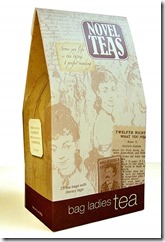
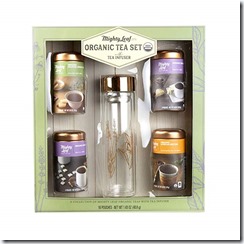

10. Body lotions, hand cream, and scented soaps are always helpful to induce relaxation.
11. Stylish pens are a well-appreciated gift as are pens for booksignings. We can never have enough.
12. A decorative case for a pen collection may come in handy.
13. Mugs come with cute remarks for writers.
14. Decorative coasters can protect our desk from mugs holding our favorite beverage.
15. Jewelry can make a statement about who we are to the reading public.
16. Inspirational Gifts such as this Storymatic activity box and Writer’s Toolbox.
17. Tee shirts, pillows, or other clothing items for writers.
18. Movies. Look for films about writers or favorite genre films/TV shows.
Lastly, these intangible gifts might be appreciated more than any material goods.
19. Write a review of their latest book and post it online.
20. Give the gift of Time. Take over some chores so your writer can have more time to write.
What else would you add to this list?
Inconsistent Characters
Revisions for our novels should include a complete read-through for repetitions and inconsistencies. What do we mean by the latter? You’ll want to take a look at your characters to see if they are behaving in a manner consistent with their personality. As a writer, this should be an essential part of your self-editing process. Below are some examples.
What’s wrong with this passage?
Dalton went for his gun, but Marla slapped his hand away. “Don’t risk it. You don’t know what we’re up against yet. And they won’t know you’re armed.”
Marla would never slap Dalton’s hand away. He’s a police officer. He knows his business. He’s allowed her to come along on a night mission, which she shouldn’t jeopardize this way.
Often it’s my critique group that catches these kinds of mistakes. In this case, I read those sentences and frowned. Wait a minute. Marla would never do this. I went back and changed it.
Ditto for Marla acting dumb. My editor has caught me on this one more than a few times. “Marla is too smart not to figure this out when everyone else knows what’s going on.” She isn’t acting in character when she’s too dense. Same goes for Dalton. Should he let Marla accompany him to interview suspects without protesting or finding an important reason for her to come along?
This also goes for mannerisms of speech. Your rough-around-the-edges hero isn’t going to suddenly say, “Oh, good heavens.” His dialogue should be consistent with his personality.
Here are more examples from my current work-in-progress. Marla and Dalton are talking about the victim.
“That would have given someone plenty of time to whack her on the head and get away,” Dalton said.
“Do you truly believe another person did this to her?” Marla’s glance darted to the rows of strawberry plants, the water-lined canal, and the tall sugar cane. Was the culprit watching them from some hidden viewpoint? Should they be worried he might return?
My editor said, It’s obvious another person did this to her. Could the woman whack herself on the back of her head?
“This injury is indicative of a blow to the back of the head,” Dalton replied. “The medical examiner will determine the exact cause of death, though.”
Would he say this to Marla when the gash is evident? Not according to my editor, who wrote, “This is another dumb remark. Of course matted blood to the back of the head is “indicative” of a blow to the back of the head!!!”
I’m lucky my editor isn’t afraid to call the shots as she sees them. She’s always right. Here is my rewrite. See what you think:
“So that would have given someone plenty of time to whack her on the head and get away.”
“Are you certain the blow is what killed her?” Marla’s glance darted to the rows of strawberry plants, the water-lined canal, and the tall sugar cane. Was the culprit watching them from some hidden viewpoint? Should they be worried he might return?
“That’s not for me to say, but it would be my best guess. The medical examiner will determine the exact cause of death.”
We hope to catch these errors during the revision process. What we write during the heat of the story-making process doesn’t always pass muster when examined under the editorial microscope.
Inconsistent Characters in your Novel #amwriting #revisions Share on X











